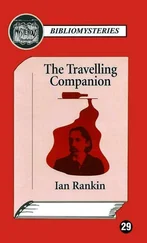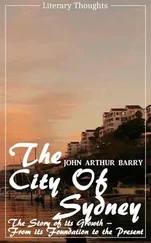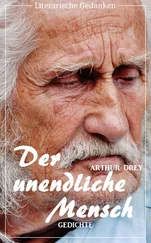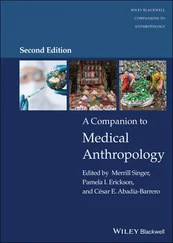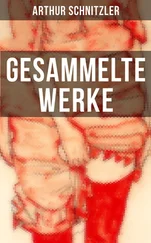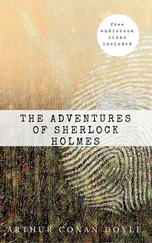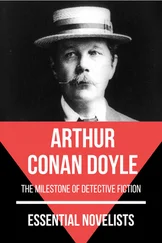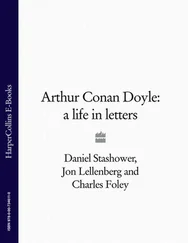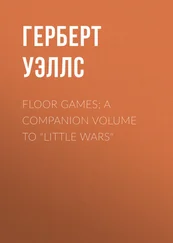A Companion to Arthur C. Danto
Здесь есть возможность читать онлайн «A Companion to Arthur C. Danto» — ознакомительный отрывок электронной книги совершенно бесплатно, а после прочтения отрывка купить полную версию. В некоторых случаях можно слушать аудио, скачать через торрент в формате fb2 и присутствует краткое содержание. Жанр: unrecognised, на английском языке. Описание произведения, (предисловие) а так же отзывы посетителей доступны на портале библиотеки ЛибКат.
- Название:A Companion to Arthur C. Danto
- Автор:
- Жанр:
- Год:неизвестен
- ISBN:нет данных
- Рейтинг книги:5 / 5. Голосов: 1
-
Избранное:Добавить в избранное
- Отзывы:
-
Ваша оценка:
- 100
- 1
- 2
- 3
- 4
- 5
A Companion to Arthur C. Danto: краткое содержание, описание и аннотация
Предлагаем к чтению аннотацию, описание, краткое содержание или предисловие (зависит от того, что написал сам автор книги «A Companion to Arthur C. Danto»). Если вы не нашли необходимую информацию о книге — напишите в комментариях, мы постараемся отыскать её.
Companion
A Companion to Arthur C. Danto
A Companion to Arthur C. Danto — читать онлайн ознакомительный отрывок
Ниже представлен текст книги, разбитый по страницам. Система сохранения места последней прочитанной страницы, позволяет с удобством читать онлайн бесплатно книгу «A Companion to Arthur C. Danto», без необходимости каждый раз заново искать на чём Вы остановились. Поставьте закладку, и сможете в любой момент перейти на страницу, на которой закончили чтение.
Интервал:
Закладка:
412 398
413 399
414 400
415 401
416 402
417 403
418 404
419 405
420 406
421 407
422 408
423 409
424 410
425 411
Preface
JONATHAN GILMORE AND LYDIA GOEHR
This Companion was conceived following the death of Arthur Coleman Danto in 2013. Its long-standing gestation owes something to the process of commissioning articles, but more deeply reflects our desire, as its editors, to wait a while, to let his death be mourned and his influence be reflected upon. The volume stands apart from the already impressive collections of essays on Danto’s life and work, edited by Randall Auxier and Lewis Edwin Hahn (in 2013), by Mark Rollins (in 2012), and by Daniel Herwitz and Michael Kelly (in 2007). (The many contributions outside America to Danto scholarship should also be noted.) The contributors to the present volume, renowned scholars and emerging new voices, were tasked to offer short, essayistic interventions, suggestive of the style in which Danto himself excelled. As Danto borrowed the long-standing idea for his own philosophical outlook: style makes the person just as it renders unique an art work and a thought. The contributions to this volume have not been written therefore as parts of a systematic or unified whole, nor to cover every aspect of Danto’s extensive oeuvre. Instead, with an often-revisionary aim, they capture what the writers—with their unique perspectives—found most compelling. This collection thus truly serves as a companion to a thinker who much enjoyed the wit, eclecticism, variety, and tensions between alternate philosophical methods and traditions. It takes paths that Danto sometimes more tiptoed than trod with well-made steps: into, for example, architecture, dance, and film. Constructed and composed with the marvelous assistance and the refined critical perspectives of Jonathan Fine and Elizabeth Benn, the companion offers a contrapuntal accompaniment to reading Danto, but not, we insist, a substitute.
In his astonishingly capacious intellectual life, Danto wrote on violence in the works of George Sorel, Nietzsche, Sartre, Buddhism, action theory, the history of analytical philosophy, and the philosophies of language, perception, and mind. It was, however, his philosophies of history and art that, in his lifetime, were taken up the most vigorously. If one hears the name Danto, one responds: ah yes—his analytical theory of narrative/historical sentences and his Hegelian thesis for the end of art! And then–how possibly could one make the two stand together? His lifelong attempt to weave Anglo-American, analytical and so-described continental approaches to philosophical thinking, produced fascinating antagonisms, perfectly reflective of the post-War, Cold War, and East-West struggles of the early decades of his long career in the academy. Likewise, his voracious reading in social and cultural history allowed him to assume an overall humanistic perspective and range of views often at odds with the quarrels of self-proclaimed modernists and postmodernists.
Danto liked to recall his accidental introduction to questions in the philosophy of art, when, at the last minute, he was invited to speak at a meeting of the American Philosophical Association. The result was what was to become his enormously influential essay of 1964, “The Artworld.” The accidental character of his address regarded his engagement only with the philosophy of art, not with the arts themselves. Early on, he was a highly-accomplished and ambitious lithographer and printmaker, a period from which many works remain and have recently been exhibited (as readers will learn from his daughter Ginger Danto’s essay in this volume). After his death, an extraordinary number of those prints, plus paintings and drawings, were found covered in dust on the top of a cupboard in his apartment on Riverside Drive.
Why he turned from art-making to reflecting on art is of course a question that demands a more complex answer than his favored quip, that he did it “for the money.” To be sure, he found stability in his tenure as a professor of Philosophy at Columbia University. But it was as a theorist, critic, and commentator on the arts, writing for The Nation magazine, in which he discovered his métier and passion. Writing everyday with unwavering joy, he held to the belief that he had never had the same thought twice. A voracious reader of fiction, he showed how even a rigorous and perspicuous philosophical exposition can possess the style of a literary art. His most influential writings bear the impress of profound changes between the 1960s and the 1990s in art practice, the market, museums, audiences of art, and the role of critics and connoisseurs as guides and gatekeepers. But this body of work also responded to tumultuous changes in society at large in those decades, as we see in his reflections on human and civil rights, public values, dreams of democracy, racism, feminism, and censorship. Many of the essays here offer thoughtful commentaries on these more political and social issues. Danto’s engagement with living artists of his own day allowed him to breathe in the atmosphere to which he appealed as defining what art essentially is. He belonged very much to his century, in ways—following his philosophy of history—that time continues to tell.
Notes on Contributors
Tiziana Andinais Professor of Philosophy at University of Turin, and author of Arthur Danto: Philosopher of Pop .
Frank Ankersmitis Emeritus Professor for Philosophy of History and Intellectual History at Groningen University. He writes on representation in the writing of history and in political and aesthetic representation.
Sondra Bacharachis an Associate Professor and Head of Programme in Philosophy at the Victoria University of Wellington in New Zealand. Recent research about street art has appeared in the British Journal of Aesthetics and The Monist .
Georg W. Bertramis Professor of Philosophy at the Freie Universität Berlin, and author of Hegels “Phänomenologie des Geistes.” Ein systematischer Kommentar and Art as Human Practice. An Aesthetics .
J. M. Bernsteinis University Distinguished Professor of Philosophy at the New School for Social Research. Among his books are: The Fate of Art: Aesthetic Alienation from Kant to Derrida and Adorno , Adorno: Disenchantment and Ethics , Against Voluptuous Bodies: Late Modernism and the Meaning of Painting , Torture and Dignity: An Essay on Moral Injury .
Peg Brand Weiseris Laureate Professor of Philosophy at the University of Arizona and Emerita Associate Professor of Philosophy and Women’s Studies at Indiana University. Editor of Beauty Matters and Beauty Unlimited , her most recent work focuses on the perception of athletes’ bodies and female agency.
Kyle Bukhariis a dance researcher, educator, and performer, and visiting faculty at Sarah Lawrence College.
Remei Capdevila-Werning, Assistant Professor of Philosophy at the University of Texas Rio Grande Valley, is author of Goodman for Architects and several essays in the philosophy of architecture, aesthetics, and preservation.
Taylor Carmanis Professor of Philosophy at Barnard College, and author of Heidegger’s Analytic and Merleau-Ponty ; and coeditor of The Cambridge Companion to Merleau-Ponty .
Matilde Carrasco Barrancois Associate Professor of Aesthetics and Theory of Arts in the University of Murcia (Spain). She works on the relation between aesthetics, and beauty, and contemporary art theory.
Читать дальшеИнтервал:
Закладка:
Похожие книги на «A Companion to Arthur C. Danto»
Представляем Вашему вниманию похожие книги на «A Companion to Arthur C. Danto» списком для выбора. Мы отобрали схожую по названию и смыслу литературу в надежде предоставить читателям больше вариантов отыскать новые, интересные, ещё непрочитанные произведения.
Обсуждение, отзывы о книге «A Companion to Arthur C. Danto» и просто собственные мнения читателей. Оставьте ваши комментарии, напишите, что Вы думаете о произведении, его смысле или главных героях. Укажите что конкретно понравилось, а что нет, и почему Вы так считаете.

